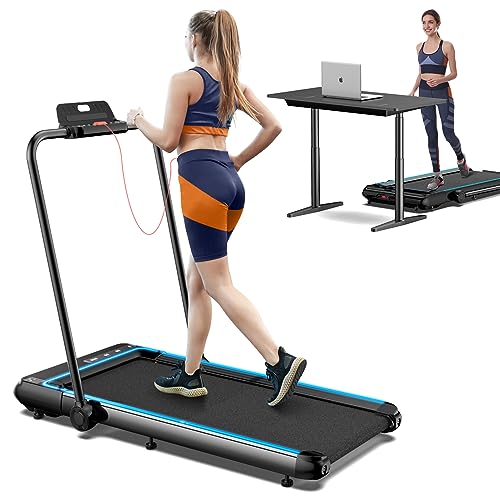
Treadmill Home
Add a reviewOverview
-
Founded Date November 17, 2007
-
Sectors Health Care
-
Posted Jobs 0
-
Viewed 69
Company Description
10 Walking Machine Tricks All Experts Recommend
The Walking Machine: A Comprehensive Guide to Your Fitness Companion
In today’s fast-paced world, where time is a high-end, keeping a constant workout regimen can be a difficulty. For lots of, a walking machine– commonly called a treadmill– functions as an ideal fitness companion. This post offers an extensive appearance at walking machines, including their advantages, types, maintenance pointers, and often asked questions.
Why Choose a Walking Machine?
Walking machines use a useful and reliable way to integrate cardiovascular workout into every day life. Here are a number of essential advantages:
- Convenience: Walking machines permit individuals to exercise anytime, despite climate condition or time restrictions. They are best for hectic schedules.
- Flexibility: Users can walk, jog, or perform at their own speed and strength.
- Security: Walking machines provide a lower risk of injury compared to outside walking or running, specifically for beginners or those recovering from injuries.
- Tracking Progress: Many treadmills included integrated displays that track metrics like speed, distance, and calories burned.
Kinds Of Walking Machines
When considering a walking machine, it’s vital to pick the best type based on private fitness goals and area restraints. Below are the main kinds of walking machines:
| Type | Description |
|---|---|
| Manual Treadmills | These machines do not have a motor, and users require to walk or run to rotate the belt. |
| Electric Treadmills | Powered by an electric motor, permitting users to set the speed and slope easily. |
| Folding Treadmills | Designed for simple storage, these treadmills can be folded when not in use. |
| Desk Treadmills | Suitable for a double work and workout environment, these compact machines enable walking while working. |
| Incline Trainers | These permit users to simulate uphill walking, enhancing exercise strength and calorie burn. |
Picking the Right Walking Machine
Selecting the best walking machine can considerably impact motivation and efficiency. Here are some aspects to think about:
Key Features to Look For
- Motor Power: A powerful motor ensures a smooth and constant exercise. For occasional walkers, a 1.5 HP motor is generally enough; for much heavier use, look for 3.0 HP and above.
- Belt Size: A broader and longer belt supplies more space for a comfortable stride. Standard sizes range from 16 inches large and 50 inches long.
- Incline Options: Adjustable incline settings can simulate walking or running uphill, increasing the intensity of the workout.
- Shock Absorption: Good shock absorption lowers the risk of joint injuries and enhances convenience.
- Console Features: Look for built-in exercises, heart rate displays, and connectivity functions like Bluetooth for a more appealing experience.
Spending plan Considerations
Walking machines come in a wide variety of prices, depending upon features and building quality. Here’s a rough budget breakdown:
| Price Range | Functions |
|---|---|
| Under ₤ 300 | Fundamental manual or little electric treadmills with limited functions. |
| ₤ 300 – ₤ 700 | Advanced electric treadmills with slope, medium power motors, and better service warranties. |
| ₤ 700 – ₤ 1500 | Top quality electric treadmills with bigger built-in screens, substantial functions, and service warranties. |
| ₤ 1500 and above | High-end models offering advanced innovation, features, and durable building for serious fitness lovers. |
Maintenance Tips for Your Walking Machine
To make sure durability and optimal performance of a walking machine, think about the following maintenance pointers:
- Regular Cleaning: Dust and sweat can build up on the machine and the belt. Clean down the surfaces and clean the belt routinely.
- Lubrication: Depending on the model, lubricating the running belt occasionally can avoid wear and tear. Inspect the manufacturer standards for recommended lubrication schedules.
- Inspection: Periodically check the machine for loose screws or used parts. Tighten and change as needed.
- Calibration: Occasionally, check the calibration of your machine’s metrics to guarantee they provide precise information.
- Proper Use: Follow the maker’s recommendations for weight limitations and operational guidelines.
FAQs About Walking Machines
1. Are walking machines a good exercise?
Yes, walking machines supply an outstanding cardiovascular workout, can aid with weight-loss, and improve total health.
2. How frequently should I use a walking machine?
Go for at least 150 minutes of moderate-intensity aerobic activity weekly, which can quickly be accomplished with routine sessions on a walking machine.

3. Can I slim down on a walking machine?
Yes, including a walking machine routine into a healthy diet plan can promote weight loss, especially if combined with periods and incline training.
4. Is it safe for elders to use a walking machine?
Yes, walking machines can be safe for elders with low-impact settings and security functions like hand rails. However, people ought to seek advice from with their doctor before starting any workout program.
5. What’s the difference between a treadmill and a walking machine?
The term “walking machine” generally describes a treadmill intended for walking, while “treadmill” can describe machines utilized for various strengths, including running.
With their versatility and convenience, walking machines can substantially boost one’s fitness journey. By thoroughly picking the best type, guaranteeing proper maintenance, and incorporating various exercise strategies, users can maximize their walking machine’s benefits. Just like any exercise regimen, consistency is crucial to accomplishing long lasting fitness outcomes.
